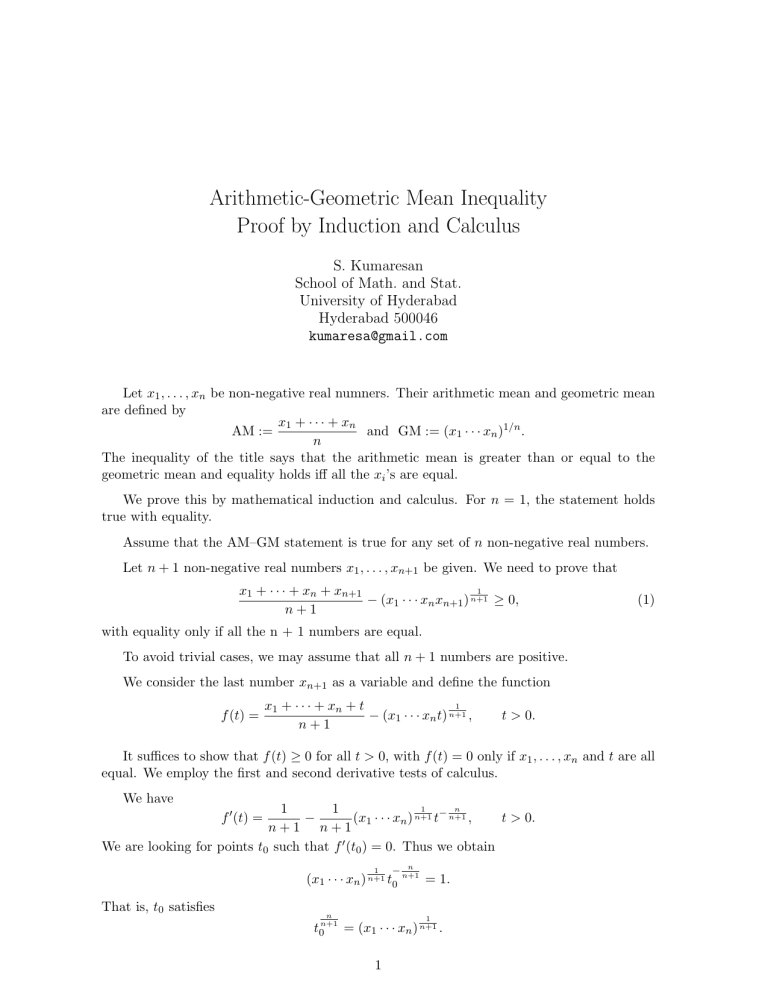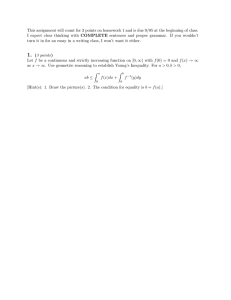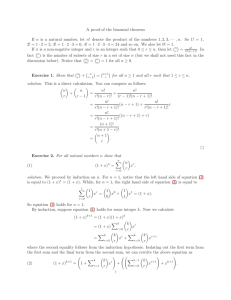
Arithmetic-Geometric Mean Inequality Proof by Induction and Calculus S. Kumaresan School of Math. and Stat. University of Hyderabad Hyderabad 500046 kumaresa@gmail.com Let x1 , . . . , xn be non-negative real numners. Their arithmetic mean and geometric mean are defined by x1 + · · · + xn AM := and GM := (x1 · · · xn )1/n . n The inequality of the title says that the arithmetic mean is greater than or equal to the geometric mean and equality holds iff all the xi ’s are equal. We prove this by mathematical induction and calculus. For n = 1, the statement holds true with equality. Assume that the AM–GM statement is true for any set of n non-negative real numbers. Let n + 1 non-negative real numbers x1 , . . . , xn+1 be given. We need to prove that 1 x1 + · · · + xn + xn+1 − (x1 · · · xn xn+1 ) n+1 ≥ 0, n+1 (1) with equality only if all the n + 1 numbers are equal. To avoid trivial cases, we may assume that all n + 1 numbers are positive. We consider the last number xn+1 as a variable and define the function f (t) = 1 x1 + · · · + xn + t − (x1 · · · xn t) n+1 , n+1 t > 0. It suffices to show that f (t) ≥ 0 for all t > 0, with f (t) = 0 only if x1 , . . . , xn and t are all equal. We employ the first and second derivative tests of calculus. We have 1 n 1 1 − (x1 · · · xn ) n+1 t− n+1 , t > 0. n+1 n+1 We are looking for points t0 such that f 0 (t0 ) = 0. Thus we obtain f 0 (t) = 1 n − n+1 (x1 · · · xn ) n+1 t0 That is, t0 satisfies n = 1. 1 t0n+1 = (x1 · · · xn ) n+1 . 1 Or what is the same 1 t0 = (x1 · · · xn ) n . That is, the only critical point t0 of f is the geometric mean of x1 , . . . , xn . Note that if t = Rn for very large R 1, f (t) → ∞ as R → ∞. Hence it follows that f has a strict global minimum at t0 . Note that f 00 > 0 and hence the function is convex. Hence t0 must be a point of global minimum. We now compute f (t0 ). f (t0 ) = = = = 1 1 x1 + · · · + xn + (x1 · · · xn )1/n − (x1 · · · xn ) n+1 (x1 · · · xn ) n(n+1) n+1 1 1 x1 + · · · + xn 1 + (x1 · · · xn ) n − (x1 · · · xn ) n n+1 n+1 1 x1 + · · · + xn n − (x1 · · · xn ) n n+1 n+1 1 n x1 + · · · + xn − (x1 · · · xn ) n . n+1 n The term withing brackets in the last step is non-negative in view of the induction hypothesis. The hypothesis also says that we can have equality only when x1 , . . . , xn are all equal. In this case, their geometric mean t0 has the same value, Hence, unless x1 , . . . , xn , xn+1 are all equal, we have f (xn+1 ) > 0. This completes the proof. 2



